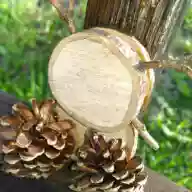Get pumped with popular songs from “Okaasan to Issho”! A collection of timeless tunes everyone will want to sing together
The many classic songs born from “Okaasan to Issho” have become precious memories for parents and children.
From bright and cheerful tunes to heartwarming, gentle melodies and energetic songs, a wide variety of favorites enrich children’s hearts.
Here, we’ll introduce popular songs you can enjoy with your child.
From nostalgic pieces often sung in nursery schools and kindergartens to the latest hits everyone’s talking about, this collection is full of music that makes family time even more fun.
Find your favorite song and enjoy a joyful moment filled with smiles!
- [Childcare] Fun Songs for 2-Year-Olds to Sing! Recommended Song Collection
- [Preschool] Recommended choral pieces for 3-year-olds
- [Minna no Uta] Tear-jerking masterpiece. A moving song you want to hear again.
- Choral songs that captivate 4-year-olds! A collection of heartfelt song ideas for junior kindergarten recitals
- I want to sing it at the senior class recital! A choral piece that 5-year-olds can sing with all their heart
- [Children's Songs] Cute songs recommended for childcare. List of popular nursery rhymes.
- Complete List of Ending Themes from “Okaasan to Issho” (All-Time)
- Nursery rhymes to sing to your baby! Recommended songs enjoyable from 0 months
- [For 4-year-olds] Popular and classic songs to sing at recitals and seasonal events
- [For 3-year-olds] Songs to sing at nursery schools and kindergartens! Popular and recommended songs
- Sing and dance along to popular songs! Recommended hits from kids’ TV shows.
- [For 1-year-olds] Fun Together! Recommended Songs and Hand Play Collection
- [Parenting] Parent-child bonding! Hand-play songs and traditional nursery rhymes collection
Get excited with popular songs from “Okaasan to Issho”! A collection of classics everyone wants to sing together (251–260)
Under the Big Chestnut TreeOsamu Sakata, Yuko Kanzaki

It’s a classic hand-play song that kids sing and dance to at nursery schools and kindergartens.
Since it’s been passed down for generations, many people probably listened to it as children and now sing and play it with their own kids.
It’s a very short song, but by changing the speed and repeating it, you can enjoy it over and over.
That child who was blown by the windAkihiro Sugita, Ryoko Tsunoda

A never-before-seen child came, carried by the wind.
“Where in the world did they come from? I want to play together—are they shy?” It’s a gentle, soft-toned song that sings of a child’s curiosity and kindness.
Just listening to it makes you feel warm and tender.
Flamenco of the WindKentaro Hayami, Ayumi Shigemori

Set to an authentic flamenco melody, this song describes how it feels to be wobbly and weak from a cold.
It portrays a child’s feelings as they suffer through the hardships of a cold—sneezing, running a fever, feeling awful—yet still hating the idea of getting a shot.
Wow!! Stylish!Kentaro Hayami, Ayumi Shigemori

Lions combing their manes, elephants taking showers, hippos washing themselves, and crocodiles brushing their teeth.
It’s a fun song about animals grooming themselves.
Listening to this song might even make children want to imitate them and busily get themselves ready.
Dad is always awake.Kentaro Hayami, Ayumi Shigemori

A song from “Okaasan to Issho” that’s not so common: one with a dad theme.
Even when you wake up in the middle of the night or can’t get out of bed in the morning, Dad is always up.
Dad gently strokes your head.
Knowing their child is watching them like this would surely make dads feel, “All right, I’ll do my best!”
Goodbye MarchOsamu Sakata, Miyuki Mori

Sayonara March is the song that took over the ending theme from Manekko Pun, which had been used since the start of the puppet show Niko Niko Pun.
This was the first time the ending theme had changed within the same puppet show, and it continued to be used for the following eight years.
The hand gate at the end of the program, which is now a standard feature, is said to have started with Sayonara March.
It wonderfully captures the scene of children cheerfully heading home, and it’s heartwarming to see them still playfully having fun right up to the very end as they leave.
Goronta OndoIchiro Mizuki, Nobuko Saito

The ending theme used from 1976 to 1979 was “Goronta Ondo.” It was performed by Nobuko Saito, the 11th ‘Uta no Onee-san,’ and Ichiro Mizuki, who reigned as the king of anime songs and also served as the second ‘Uta no Onii-san.
’ The Tokyo Broadcasting Children’s Choir also took part, and the energetic voices of the children left a strong impression.
In the middle of the song, there’s a scene where the character Goronta competes with the children, and it’s said that this was when the staging began of costumed characters actually interacting with kids.






